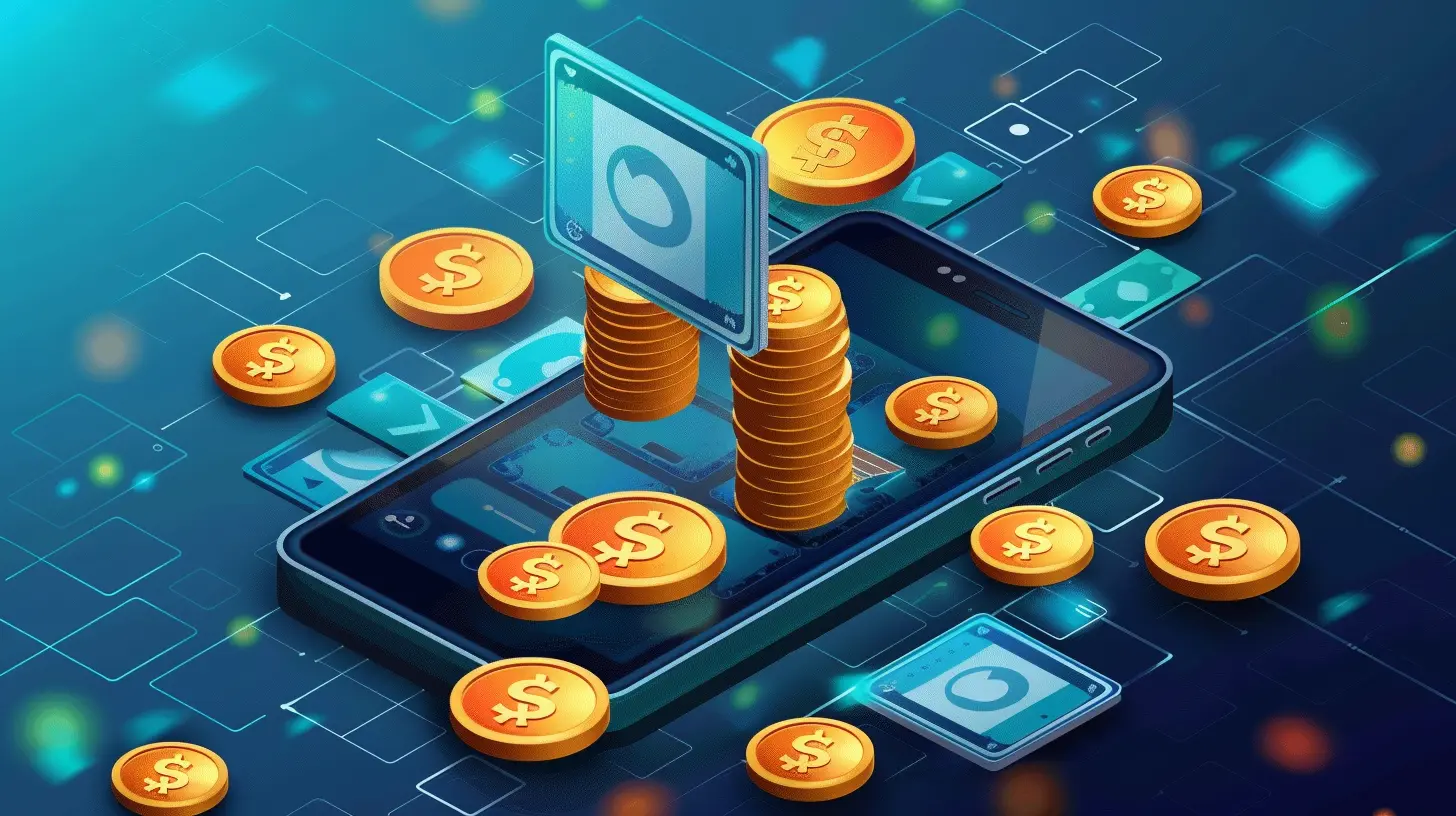Mobile Game Monetization: What Developers Should Know
21 January 2025
Mobile gaming has exploded in popularity over the past decade, with millions of games available on platforms like iOS and Android. From casual puzzle games to intense multiplayer shooters, there’s something for everyone. But, with so many games out there, how do developers make money? That’s where mobile game monetization comes in. If you're a game developer (or aspiring to be one), it's crucial to understand the various ways you can profit from your hard work. In this article, we'll break down everything you need to know about mobile game monetization strategies, best practices, and trends.

Why Is Mobile Game Monetization So Important?
Let’s face it, building a mobile game is hard work. It can take months, if not years, to create a polished product. But once your game is live, the real challenge begins: how do you make money from it?For most developers, building a game isn’t just a passion project—it’s also a business. Monetization strategies allow developers to recoup their development costs and, ideally, generate a profit that can fund future projects. Even if your game is a free-to-play (F2P) title, there are plenty of ways to generate revenue. But here’s the kicker: not all monetization methods are created equal. Some methods may alienate players, while others can enhance the gaming experience.
So, what are the best options? Let's dive into the most common and effective monetization methods for mobile games.
1. In-App Purchases (IAPs)
The OG of Mobile Monetization
When you hear about mobile game monetization, in-app purchases (IAPs) are probably the first thing that comes to mind. These are those shiny little extras that players can buy directly within your game. Think skins, boosts, extra lives, or new characters—basically anything that enhances the gaming experience.Why Are IAPs So Effective?
IAPs work because they tap into the psychology of gaming. Players are often willing to spend small amounts of money to improve their experience or progress faster.Whether it’s $0.99 for a pack of gems or $5.99 for a rare weapon, many players find it easier to spend money in small increments. And those small transactions can add up—fast.
But here's the thing: IAPs need to be done right. If your game feels too "pay-to-win," where players feel they must pay to progress, it can lead to frustration and turn users away. On the flip side, offering purely cosmetic items (like new outfits or skins) can keep players engaged without making them feel like they’re being squeezed for cash.
Pro Tip:
Make sure your IAPs are optional and enhance the player’s experience without feeling like a necessity. Players shouldn’t feel forced into spending money to enjoy the game.
2. Advertising
Ads Aren’t Always Annoying (If Done Right)
Advertising is another giant in the mobile game monetization world. And while hearing the word “ads” might make you cringe a little, they’re not all bad. In fact, if implemented thoughtfully, ads can actually add value to your game while generating significant revenue.Types of Ads
There are several types of ads you can include in your game:- Banner Ads: These are small ads that usually appear at the top or bottom of the screen. They’re non-intrusive but can be easy to ignore.
- Interstitial Ads: These are full-screen ads that appear at specific moments (like between levels). They’re more noticeable but can also interrupt the gameplay flow if not placed strategically.
- Rewarded Ads: These are the golden nuggets of mobile game ads. Players choose to watch these ads in exchange for in-game rewards (like extra coins or lives). This way, players feel like they’re benefiting from the experience, and advertisers still get their message across.
How Ads Can Affect User Experience
Too many ads can turn players off—they may feel annoyed or overwhelmed and uninstall your game. But when used sparingly and strategically, ads can provide value. For example, offering a rewarded ad after a tough level can feel like a win-win: the player gets something valuable without spending real money, and you earn ad revenue.Pro Tip:
Avoid bombarding players with ads. Instead, focus on rewarded ads, which offer the best balance between revenue generation and user experience.
3. Subscription Models
The Netflix of Mobile Gaming
Another monetization strategy that has been gaining traction is the subscription model. This is where players pay a recurring fee (usually monthly) for premium features or exclusive content.A good example of this is Apple Arcade, where players pay a monthly fee to access a library of ad-free games. While this might not be a good fit for every game, for those with a lot of content or a loyal fanbase, a subscription model can provide a steady stream of income.
Benefits of Subscriptions
One of the biggest advantages of a subscription model is the predictability of revenue. Unlike IAPs or ads, where income can fluctuate, subscriptions provide a more consistent cash flow. Plus, players who are paying regularly are more likely to stay engaged with your game, which can help with player retention.Pro Tip:
Consider offering a free trial or a lower-cost subscription tier to entice players into signing up. Once they’ve experienced the benefits, they’re more likely to stick around.4. Freemium Model
Give a Little, Charge for More
One of the most popular methods for monetizing mobile games is the freemium model. This is where the base game is free to download, but certain features or content are locked behind a paywall.For example, a puzzle game might offer the first 50 levels for free, but if players want to unlock the next 100, they need to pay. Alternatively, the core game could be free, but players can purchase premium skins, weapons, or other items.
Why Freemium Works
Freemium works because it gives players a taste of your game without any upfront cost. Once they’re hooked, they’re more likely to spend money on additional features or content. It’s kind of like offering a free sample at the grocery store—you get people interested, and they’ll come back for more.Pro Tip:
Make sure the free content is substantial enough to get players invested. If the free version feels too limited, players may abandon the game before they ever consider spending money.5. Paid Games
The Old-School Approach
While free-to-play games dominate the mobile market, there’s still room for paid games—where players pay upfront to download the game. This model is more common for premium games that offer a lot of content or a unique experience that justifies the price.Paid games can be a good option if you’re targeting a niche audience that’s willing to pay for a high-quality experience. However, it’s important to note that the paid model can limit your audience. Many players are hesitant to spend money on a mobile game upfront, especially when there are so many free options available.
Pro Tip:
If you’re going with a paid model, consider offering a demo or a limited free version of the game. This gives players a chance to try it out before committing to the purchase.6. Hybrid Monetization
Why Choose One When You Can Have It All?
Many successful mobile games use a hybrid monetization strategy, combining different methods to maximize revenue. For example, you could offer a free game with both ads and IAPs. Or, you could have a subscription model alongside optional purchases.The key to hybrid monetization is balance. You don’t want to overwhelm players with too many ways to spend money, but offering multiple options can appeal to a wider audience.
Pro Tip:
Test different combinations of monetization strategies to see what resonates with your audience. Don’t be afraid to experiment and adjust based on player feedback.7. Player Retention and the Importance of Updates
Keep Them Coming Back
No matter which monetization strategy you choose, player retention is key to long-term success. If players stop playing your game, it doesn’t matter how good your monetization methods are—you won’t make any money if no one’s playing.Regular updates, new content, and community engagement are essential for keeping players invested in your game. The more time they spend in your game, the more likely they are to make purchases or watch ads.
Pro Tip:
Listen to your players. Use feedback to improve your game and offer updates that keep the experience fresh and exciting.Conclusion
Monetizing a mobile game is all about finding the right balance between making money and providing a great user experience. Whether you’re using in-app purchases, ads, subscriptions, or a hybrid model, it’s crucial to prioritize the player’s enjoyment. After all, happy players are more likely to spend money and stick around for the long haul.Remember, no one strategy fits all. It’s important to test, iterate, and listen to your audience to find the perfect monetization mix that works for your game. So, what’s the best approach for your game? Only you can decide, but now you’re equipped with the knowledge to make an informed choice.
all images in this post were generated using AI tools
Category:
Mobile GamingAuthor:

Jerry Graham
Discussion
rate this article
16 comments
Stephanie Hahn
This article offers valuable insights into mobile game monetization strategies, highlighting the importance of understanding player demographics and preferences. By balancing in-game purchases with a rewarding user experience, developers can optimize revenue while maintaining player engagement. A must-read for anyone in the mobile gaming industry!
February 4, 2025 at 12:38 PM

Jerry Graham
Thank you for your feedback! I'm glad you found the insights helpful for understanding mobile game monetization strategies.
Bridget Newton
Ah, yes, let’s dive into the glamorous world of in-app purchases and ads! Nothing screams “fun” quite like wallets crying while players endlessly grind!
January 30, 2025 at 9:53 PM

Jerry Graham
Thanks for your perspective! Balancing monetization and player enjoyment is indeed a challenge for developers.
Lennox Klein
Monetization in mobile games: where creativity meets the fine art of extracting quarters!
January 29, 2025 at 9:54 PM

Jerry Graham
Thank you for your comment! Striking the right balance between creativity and monetization is indeed crucial for enhancing player experience while generating revenue.
Candice McClain
Great insights on mobile game monetization! It’s crucial for developers to balance profit strategies with user experience for long-term success.
January 29, 2025 at 6:03 AM

Jerry Graham
Thank you! Striking that balance is key to fostering both player satisfaction and sustainable revenue.
Edward McCarthy
Successful mobile game monetization balances user experience with innovative strategies, ensuring players feel valued while supporting developers sustainably. Quality prevails.
January 28, 2025 at 7:49 PM

Jerry Graham
Thank you for your insightful comment! Balancing user experience and innovative monetization strategies is indeed crucial for sustainable success in mobile gaming. Quality should always come first!
Kason McSweeney
Successful mobile game monetization hinges on balancing user experience with revenue strategies. Understanding player psychology and preferences is crucial for sustainable growth and engagement.
January 28, 2025 at 12:27 PM

Jerry Graham
Absolutely! A deep understanding of player psychology is key to creating monetization strategies that enhance rather than hinder the user experience, ensuring long-term engagement and growth.
Rocco McKeehan
Great insights! Navigating mobile game monetization can be tricky, but with the right strategies, developers can turn fun into funds! 🎮💰
January 26, 2025 at 5:28 AM

Jerry Graham
Thank you! I'm glad you found the insights valuable—navigating monetization effectively is key to success in the mobile gaming industry!
Darius Brown
This article succinctly outlines essential strategies for mobile game monetization, emphasizing the balance between user experience and revenue generation. Developers must prioritize player engagement while exploring diverse monetization avenues, such as in-app purchases and ads, to ensure sustainable growth in a competitive market. A must-read for aspiring developers!
January 25, 2025 at 7:34 PM

Jerry Graham
Thank you for your insightful comment! I'm glad you found the article helpful in balancing user experience with monetization strategies. Your support for aspiring developers is much appreciated!
Carrie Franco
Great insights on mobile game monetization! It's like trying to find the perfect recipe for a fun cake—too much frosting, and it’s overwhelming; too little, and it’s bland. Kudos to developers for baking up exciting experiences while figuring out the sweet spot for revenue! Keep those game ideas coming! 🍰🎮
January 24, 2025 at 12:59 PM

Jerry Graham
Thank you! I'm glad you enjoyed the comparison. Finding that balance is indeed key for both enjoyment and revenue. Stay tuned for more insights! 🍰🎮
Oren Barron
Great insights on mobile game monetization! Your tips will undoubtedly help developers navigate the complexities of generating revenue while maintaining player engagement. It's all about finding that perfect balance, and your advice is a valuable resource. Looking forward to more informative content like this!
January 23, 2025 at 8:11 PM

Jerry Graham
Thank you for your kind words! I'm glad you found the insights helpful. Stay tuned for more tips on mobile game monetization!
Blair Allen
Monetizing mobile games feels like finding the perfect candy in a piñata—tricky but oh-so-rewarding! Let's dive into the sweet strategies for turning fun into funds without breaking the players’ hearts (or wallets)!
January 23, 2025 at 12:53 PM

Jerry Graham
Absolutely! Striking the right balance between player enjoyment and monetization is key. Let's explore strategies that enhance gameplay while ensuring sustainable revenue.
Michelle McKellar
Great insights! Understanding mobile game monetization is crucial for developers. Can't wait to see how these strategies shape the gaming landscape!
January 23, 2025 at 5:48 AM

Jerry Graham
Thank you! I'm glad you found the insights valuable. Exciting times ahead for developers in the mobile gaming space!
Patricia Bennett
Great article! It's vital for developers to understand the nuances of mobile game monetization. Balancing profitability with player satisfaction is key. Remember, fostering a positive gaming experience can lead to long-term loyalty. Wishing all developers success in creating engaging and fair monetization strategies!
January 22, 2025 at 8:54 PM

Jerry Graham
Thank you for your thoughtful comment! I completely agree—striking that balance is essential for both profitability and player loyalty. Wishing all developers the best in their monetization endeavors!
Sorin McBride
Monetizing mobile games is like baking a perfect cake—mix the right ingredients, sprinkle some creativity, and watch your profits rise! Remember, even a little frosting can make all the difference. Happy developing!" 🎮💰
January 22, 2025 at 12:17 PM

Jerry Graham
Absolutely! Just like baking, successful monetization requires the right blend of strategy and creativity. Every detail counts! 🎂🚀
Roman Lopez
While the article highlights key monetization strategies, it overlooks the importance of user experience. Balancing profit with player satisfaction is crucial; otherwise, developers risk losing their audience in the long run.
January 21, 2025 at 1:12 PM

Jerry Graham
Thank you for your insightful comment! I completely agree that prioritizing user experience is essential for sustainable monetization in mobile games. Balancing profit with player satisfaction is key to retaining audiences.
Fay McTiernan
Coins before joy, folks!
January 21, 2025 at 6:02 AM

Jerry Graham
Absolutely! Balancing monetization with player satisfaction is key to long-term success.
MORE POSTS

How AI is Powering the Next Generation of Wearables

The Ethical Challenges of AI in Digital Transformation

Can Artificial Intelligence Replace Human Creativity?

How Blockchain Technology is Influencing Data Analytics

VR Headsets in Sports Training: The Next Big Thing?

How AR Glasses Are Revolutionizing Remote Work

The Future of AI in Everyday Life: What to Expect

Tech Accessories That Simplify Your Life

How to Choose the Perfect Tech Backpack for Your Gear

Understanding Machine Learning: The Backbone of AI